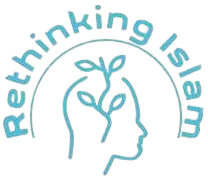Just as you explore the diverse narratives within Islamic teachings, it’s necessary to scrutinize the authenticity of Hadith. This post will guide you through the complexities of these narrations, shedding light on the criteria used to evaluate their reliability. From understanding the chain of transmission to recognizing potential biases, you’ll gain a clearer perspective on which Hadith you can confidently reference in your studies and discussions.
Key Takeaways:
- Not all Hadith narrations are considered equally authentic; critical analysis is vital.
- The chain of transmission (Isnad) and the reliability of narrators play a significant role in assessing authenticity.
- Scholarly consensus varies on the classification of Hadith, requiring continuous revisitation of sources.
The Foundations of Hadith Authentication
Understanding the foundations of Hadith authentication is imperative to discern which narrations can be trusted. Various methodologies have been developed over centuries by scholars to assess the authenticity of these texts. These methods focus on the reliability of narrators, the integrity of the narrative, and historical consistency. Familiarizing yourself with these foundations enables you to critically evaluate Hadith and aligns your understanding with traditional Islamic scholarship.
Key Criteria for Validation
When validating Hadith, several key criteria come into play. You should assess the integrity and reliability of each narrator, the continuity of the chain of transmission, and the content’s compatibility with established Islamic principles. Each criterion helps you filter weak or fabricated reports and guides you towards authentic narrations.
The Role of Isnad (Chain of Narration)
The Isnad plays a significant role in determining the authenticity of a Hadith. It is the chain of narrators who have transmitted the report from the Prophet Muhammad. By examining the Isnad, you can establish a direct link to the source and evaluate the credibility of each narrator involved in the transmission.
The Isnad not only serves as a lineage for the Hadith but also reflects the ethical and scholarly rigor of those involved in its transmission. As you study the Isnad, you will notice that each narrator’s character, memory, and reliability are assessed and documented. This rigorous evaluation helps identify discrepancies, revealing whether the narration can be trusted. Understanding the significance of the Isnad allows you to engage with Hadith texts with greater confidence in their authenticity and relevance to your practice of Islam.
Dissecting the Categories of Hadith
Understanding the categories of Hadith is important for evaluating their authenticity and reliability. Hadith can be classified into several categories, primarily based on the strength of their chains of transmission and the integrity of their content. By familiarizing yourself with these classifications, you can discern which narrations hold greater weight and relevance in your study and practice of Islamic teachings.
Sahih vs. Daif: Understanding the Spectrum
Sahih Hadith are those considered authentic and reliable, possessing a strong chain of narrators and sound content. In contrast, Daif Hadith are deemed weak due to issues in their chain or content. By differentiating between these categories, you equip yourself to make informed decisions about the narrations you choose to follow and apply in your life.
The Implications of Weak Narrations
Weak narrations, while sometimes containing beneficial lessons, can potentially lead to misunderstandings or misapplications of Islamic principles. If you rely on Daif Hadith for guidance, you may inadvertently adopt practices or beliefs that aren’t firmly rooted in authentic teachings. Thus, it’s vital to approach weak narrations with caution and prioritize those classified as Sahih in your studies and practices.
In your exploration of weak narrations, it’s important to recognize the potential for misinformation that may arise from relying on them. While they can sometimes offer insights or moral lessons, they should not form the basis of core beliefs or practices. Engaging critically with these narrations allows you to understand their place within the broader context of Hadith literature, ensuring that your choices are grounded in authenticity and reliability. Establishing a solid foundation in Sahih Hadith strengthens your knowledge and faith.
Historical Context and Its Impact on Narrations
Understanding the historical context in which hadith narrations emerged is necessary to evaluate their authenticity. Factors such as societal norms, existing conflicts, and prevalent ideologies played significant roles in how these narrations were recorded and transmitted. You must consider the environment of early Islam, where oral tradition was prevalent, and how that shaped the reliability of hadiths over centuries.
The Influence of Early Compilers
Early compilers of hadith, like Imam Bukhari and Imam Muslim, greatly shaped the landscape of Islamic teachings. Your understanding of their methodologies, including rigorous criteria for authenticity, helps you appreciate the structure of hadith literature. Still, you should also recognize that their interpretations may reflect their own historical biases and limitations.
Political and Cultural Factors in Transmission
Political and cultural dynamics heavily influenced the transmission of hadith narrations. You should consider how different regimes used religious texts to legitimize their authority, sometimes altering narrations to fit their agendas. Such manipulation can cloud the purity of certain narrations.
- Many narrators were linked to political figures, influencing what’s conveyed.
- Rival schools of thought often twisted narratives to support their beliefs.
- Each culture’s interpretation can lead to varied understandings of the same text.
- The impact of these factors can significantly affect a hadith’s credibility.
These political and cultural considerations represent how power dynamics shaped the hadith narrative landscape. You must scrutinize which sources align with or contradict these influences, as they may reflect historical biases rather than authentic teachings. Such critical analysis can reveal underlying motives that may distort the original meanings of the hadiths.
- Geographical differences also resulted in variations in how hadith were conveyed.
- Social hierarchies influenced who had access to narrate and pass on teachings.
- Contextual understanding is necessary for accurate interpretation.
- The awareness of these factors is vital for a deeper grasp of hadith authenticity.
The Modern Challenges in Hadith Interpretation
The interpretation of Hadith faces numerous modern challenges that impact your understanding of these texts. With the influence of diverse perspectives, varying methodologies, and the availability of new information, you may find it difficult to discern acceptable interpretations. These challenges compel you to engage critically with Hadith literature and to be aware of the implications of contemporary cultural and academic contexts.
Technological Advances and Access to Texts
With the advent of technology, you now have unprecedented access to Hadith collections and scholarly resources. Digital libraries, databases, and online platforms allow you to explore texts and opinions from scholars worldwide. However, this accessibility also necessitates a discerning approach, as not all resources maintain the same academic rigor or authenticity.
Contemporary Debates Among Scholars
Today, scholars engage in lively debates regarding the authenticity, classification, and applicability of various Hadith. You may encounter differing opinions on the chain of narrators and the context of specific narrations, prompting you to critically evaluate the rationale behind each perspective. This discourse highlights the evolving nature of interpretation, reflecting the ongoing quest for understanding within diverse communities.
Contemporary debates among scholars often revolve around key issues such as the reliability of narrators and the relevance of Hadith in modern society. As you navigate these discussions, you will notice scholars differing on interpreting Hadith in light of historical context, ethical considerations, and contemporary challenges. Engaging with these debates helps you appreciate the nuanced landscape of Islamic scholarship and encourages you to question and refine your own views on Hadith interpretation.
Navigating Personal Interpretation and Faith
As you explore hadith, it is crucial to balance personal interpretation with the teachings of Islam. Your faith journey may lead you to question certain narrations, prompting you to seek deeper understanding. Engaging with the texts while considering historical context and scholarly analysis allows you to form a more nuanced perspective. It empowers you to develop a faith that resonates with your values and experiences, fostering personal growth while remaining aligned with tradition.
The Balance Between Tradition and Modernity
You must navigate the tension between upholding traditional interpretations of hadith and adapting to modern contexts. Embracing contemporary perspectives can enhance your understanding, enabling you to find relevance in ancient teachings. Establishing this balance helps you maintain your faith while addressing the complexities of today’s world, ultimately enriching your spiritual practice.
Personal Responsibility in Hadith Selection
Your engagement with hadith necessitates a thoughtful approach to selection. It is your responsibility to discern which narrations align with your values and beliefs. Evaluating the authenticity and context of each hadith requires diligence, ensuring that your understanding reflects both foundational teachings and personal conviction.
In the pursuit of understanding hadith, your responsibility extends beyond mere acceptance. You should critically analyze narrations, considering their authenticity, context, and relevance to your life. By doing so, you not only engage with the tradition more meaningfully but also avoid misinterpretations that could impact your faith. This personal investment in hadith selection encourages a deeper connection to Islamic teachings, fostering a sense of ownership over your beliefs and practices.
Summing up
Considering all points, you must approach Hadith with a discerning eye to determine the reliability of narrations. The complexities of transmission and the context behind each narration necessitate critical evaluation. By understanding the methodologies used in Hadith science and recognizing the differences between authentic and weak reports, you enhance your knowledge and practice of Islam. Engaging with this material thoughtfully enables you to navigate your beliefs more effectively and ensures that your understanding of the teachings of the Prophet is both accurate and spiritually enriching.
FAQ
Q: What criteria are used to evaluate the authenticity of Hadith narrations?
A: The authenticity of Hadith narrations is evaluated using several criteria, including the reliability of the transmitters (Isnad), the consistency of the content (Matn), corroboration with other sources, and the absence of any irregularities. Scholars generally categorize Hadith into classifications such as Sahih (authentic), Hasan (good), and Da’if (weak) based on these criteria.
Q: Can Hadith be influenced by cultural and historical contexts?
A: Yes, Hadith can be influenced by cultural and historical contexts. The environment in which a Hadith was narrated may affect its interpretation and application. Different schools of thought may also interpret the same Hadith differently, leading to varying practices among Muslims.
Q: Are all Hadith considered equal in terms of their significance and application in Islamic jurisprudence?
A: No, not all Hadith are considered equal. Scholars prioritize Hadith based on their authenticity and relevance to Islamic jurisprudence. Authentic Hadith are generally given precedence in legal rulings, while weak or fabricated Hadith may be disregarded or approached with caution in legal and theological discussions.


